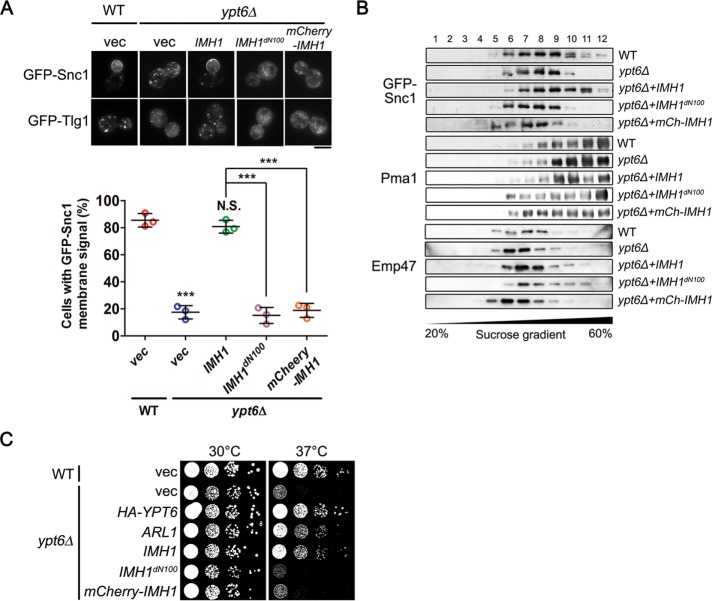FIGURE 6:
The N-terminal region of Imh1 is essential for restoring defects in endosome-to-Golgi transport and temperature-sensitive growth in ypt6Δ cells. (A) Imh1dN100 and mCherry-Imh1 failed to suppress the Snc1 and Tlg1 transport defects in ypt6Δ cells. Fluorescently tagged Snc1 or Tlg1 was coexpressed with different forms of Imh1 in ypt6Δ cells. Live cells were observed in the mid–log phase, and the percentages of cells with GFP-Snc1 membrane signals were quantified by fluorescence microscopy (n = 100). The data are reported as the mean ± SD of three biological repeats (***p < 0.001; N.S. not significant; one-way ANOVA; scale bar, 5 μm). (B) The N-terminal region is critical for Imh1 to restore the proper GFP-Snc1 cellular distribution in ypt6Δ cells. WT and ypt6Δ cells transformed with different forms of Imh1 were lysed and subjected to centrifugation in a 20–60% sucrose gradient as described in Materials and Methods. Fractions were collected and analyzed by Western blotting using antibodies against Pma1 (plasma membrane marker) and GFP-Snc1 and Emp47 (early Golgi marker). (C) Imh1dN100 and mCherry-Imh1 are unable to suppress temperature-sensitive growth defects in ypt6Δ cells. ypt6Δ cells transformed with different forms of Imh1 were serially diluted 10-fold as indicated, spotted on plates, and incubated at 30 or 37°C.

